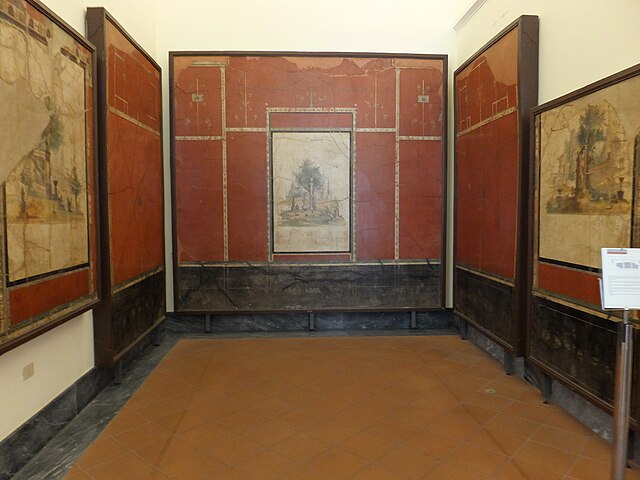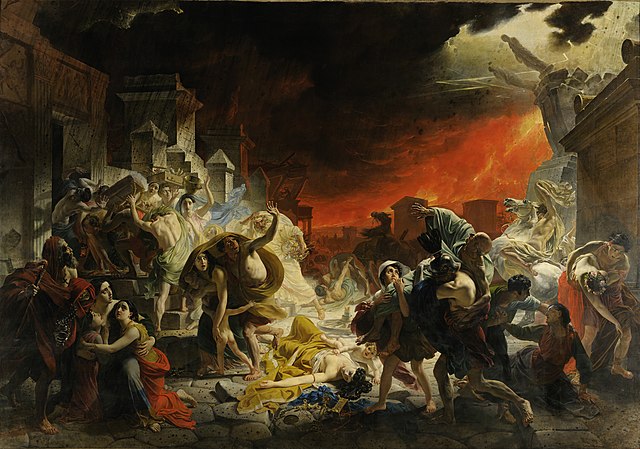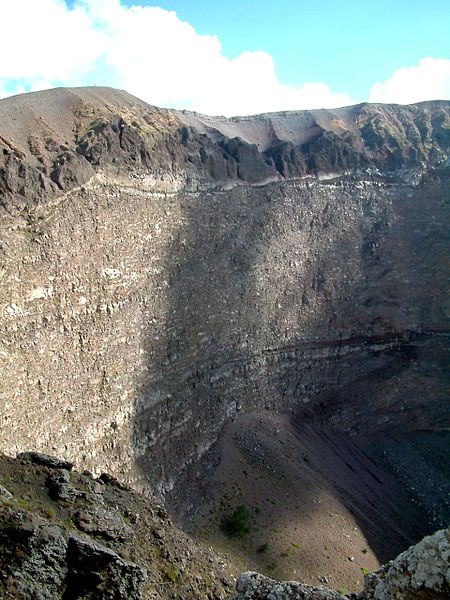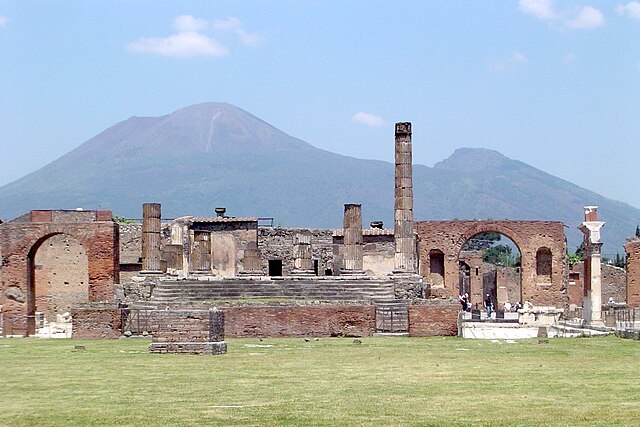Villa of Agrippa Postumus
Agrippa Postumus, a grandson of the Emperor Augustus, had a villa on the slopes of Mount Vesuvius, which was buried in the eruption of 79 AD. The villa lies within the current comune of Boscotrecase, Campania, Italy. The villa is best known for its ancient Roman works of art, especially its frescoes. Because the ash from Mount Vesuvius's eruption preserved the frescoes, they were able to be excavated between 1903 and 1905. The frescoes come from various cubicula, or bedrooms that served as places of sociability and business, along the villa's southern hallway that overlooks the bay of Naples.
Painting of Perseus and Andromeda from the eastern wall of the Mythological Room
Wall paintings showing a small landscape and a rendering of what the floor would have looked like. From Metropolitan Museum of Art, New York. last decade of the 1st century BCE
Red Room in the villa. National Archaeological Museum, Naples
Painting of Polyphemus and Galatea from the west wall of the Mythological Room. Metropolitan Museum of Art, New York. last decade of the 1st century BCE
Eruption of Mount Vesuvius in 79 AD
Of the many eruptions of Mount Vesuvius, a major stratovolcano in Southern Italy, the best-known is its eruption in 79 AD, which was one of the deadliest in history.
The Destruction of Pompeii and Herculaneum (c. 1821) by John Martin
The Last Day of Pompeii. Painting by Karl Brullov, 1830–1833
Inside the crater of Vesuvius
Pompeii, with Vesuvius towering in the background








